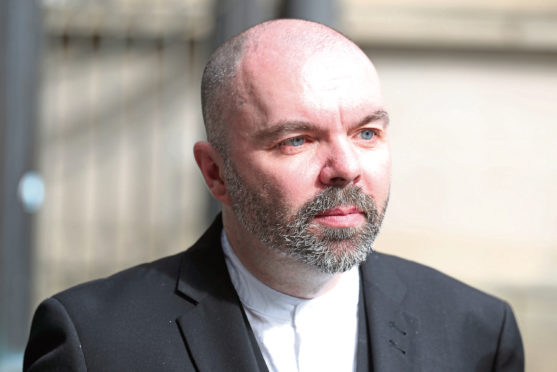The SNP is best understood as the IRP – the Independence Referendum Party.
It exists to create the ideal circumstances for a vote on Indy.
Twelve years of government has revealed a movement dedicated to offending no one while trying to hold a referendum or two.
This is what makes the nationalist suggestion of a new party to press for Indyref2 so stupid.
Stuart Campbell of Wings Over Scotland says he may start a rival nationalist party to force the matter of a second vote.
This, he says, stems from frustration at Nicola Sturgeon’s tactics.
What limits Sturgeon is exactly what stopped Salmond publishing a referendum bill in the 2007-11 administration – a lack of legal authority.
Sturgeon isn’t chicken – she’s simply responding to the law.
Which is not to say the idea of a new party isn’t good, but not another referendum one.
Instead there is a desperate need for a group focused on life after “Yes”.
The case for this new party can be made from an abundance of evidence, but let’s start with news that Scotland’s economy runs a £12 billion deficit.
Yesterday saw the annual ritual of the government expenditure and revenue Scotland (GERS) numbers showing that were Scotland to replicate UK spending after Indy, it would be in an economic mess.
Now, nobody thinks Scotland would spend like Westminster does, so the whole exercise is a bit silly.
That said, the SNP have never set out how they would spend come independence.
It is left deliberately vague, so as not to challenge “Yes” voters.
But it is a challenge that is urgently needed.
For example, health professionals say the NHS needs an annual £3bn boost in Scotland.
If an independent Scotland increased health spending to that level, it would have a huge impact on the rest of the budget.
We can assume there would be no £3bn boost – but what would health spending actually be post independence?
That is hard to say.
Even if GERS is inaccurate, it implies there would be some reduction.
If the NHS budget stayed at current levels, there would need to be cuts elsewhere – a much smaller defence budget, less on welfare, less on education?
In short, there is an urgent need for model budgets for post-independence scenarios.
Without a rough sense of spending priorities, independence could easily crush the very public services it wants to protect.
Draft budgets would be the first duty of any new political grouping.
The second would be to connect spending realities with policy change.
If there is less money, then Scotland needs to develop ways of doing things better.
What 12 years of SNP government has shown is the party has no policy ideas beyond trying to keep things as they are.
Other than a mania for rearranging the public sector (police, fire, government agencies) the Nats seem to possess no vision for how Scotland might be different before or after Indy.
That would be fine if money were not a problem – but see above.
A new political party would design a Scotland that protected the services people like, such as the NHS and pensions, while remaining affordable.
Which leads on to the other great omission in Scottish politics – a rational discussion on the process of independence itself.
If Brexit has helped, it is to show that winning a referendum is only the start of a very complex and difficult process.
After a “Yes” vote, money will be tight and the public services will have to change, therefore we really need to know what to prioritise when it comes to negotiating our departure from the UK.
Does it make sense to trade off some assets for others in those talks, or to compromise on debt obligations in return for a share of foreign territories, for example?
With the SNP as the independence referendum party, these matters are glossed over so as not to scare the swing voters.
Which creates an opportunity for a new party to fill the void.
Any new grouping does not need to contest Scottish or UK elections before Indy, so there is no threat or conflict with existing loyalties.
A new party would run for election after independence, when all the old tribalism will be pointless.
It is common to find “No” voters swithering towards “Yes”, but who need reassurance on one matter – the economic effect of becoming self governing
The SNP bluff on this topic, while unionists become hysterical on the dangers.
In truth, neither side is clear on what would happen after a “Yes” vote.
Thus the future is there to be shaped, or at least better understood.
Certainly, Scotland could be a lot better prepared. The old white paper on independence was never anything more than a sales brochure, and the Wings Over Scotland wee blue book only a primer on how to be offensive.
If Scotland is serious about a new nation protecting prized public services while playing a constructive role in the world, it needs a new approach, and now.


